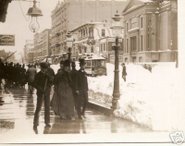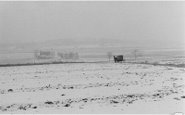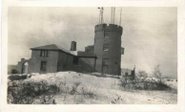Winter '18 / '19 - November/s AO Predicts The State Of Winter/s AO
NOV/s Arctic Oscillation (AO) Index: -1.116
Conventional meteorological wisdom holds the state of winter/s AO is next to impossible to forecast.
Some use analogs. The analog forecasting methods seeks similarities between the AO state in the run-up to the coming winter with AO run-up states of winters past. The NEWxSFC method ranks analog years by their sum of square errors (SSE) statistic.
Lower SSE errors ==> stronger analog
Constraining the number of analog winters for analysis to five is arbitrary.
See this year's analogs below.
---
An alternative forecasting technique looks at the AO/s 'sign' (i.e., positive or negative) for any calendar-year's month preceding the pending winter as a potential leading indicator of the AO/s sign for upcoming D-J-F period.
An alternative forecasting technique looks at the AO/s 'sign' (i.e., positive or negative) for any calendar-year's month preceding the pending winter as a potential leading indicator of the AO/s sign for upcoming D-J-F period.
Results from a chi-square 'test for independence' infers a statistically significant relationship ... at the 95% confidence level and a p-value < 0.05 ... between NOV/s AO sign and AO/s sign of the upcoming D-J-F period.
IOW ... if NOV/s AO is negative (positive) ... then the average AO state during the upcoming winter will also be negative (positive); although the classification model is stronger ... i.e., lower false alarm rate ... for the predictor's month with negative signs than positive.
True + ==> prediction is True
False + ==> prediction is False
Given NOV-18/s negative AO ... the 2x2 contingency table predicts a 73% likelihood (27/37) the three-month average AO (D-J-F) will also be negative this winter. The results says nothing about the magnitude of the winter/s AO or which months will be negative ... only the sign of its average.
During a +ENSO ... this bodes well for a colder than average winter over southern portions and snowier than average winter over just about everywhere across the NEWxSFC forecast area.
Image courtesy NCEP Climate Prediction Center/s ATLAS No. 8 - Relationships Between El Niño-Southern Oscillation and the Arctic Oscillation: A Climate-Weather Link
---
The leading analog year for the AO in the run-up to the coming winter is 1955. It tracks closely with the AO/s 2018 index year-to-date. The analog saw winter's AO/s minimum extent in FEB then rebounding sharply into meteorological spring.
The average AO for Winter '55 / '56 was -1.226. AO for all three months were negative.
Dec: -0.444
Jan: -1.204
Feb: -2.029
Major flaw: Winter '55 / '56 was a moderate La Nina (ONI: -1.1). The only year in the 'Top 5' AO analogs with a +ENSO year was '91 / '92 (ONI: 1.7) where the season-average AO floated high above the rest.
Another example how other teleconnection indexes ... in this case ENSO/s sign and strength ... can confound the potential predictive value of a single index.
Multi-variate indices of varying weights can sometimes offer additional insight when the ranked AO analogs are paired with teleconnection indices such as PDO ... QBO ... MEI ... SOI ... NAO ... and sun spots; however .. that's not happening this year ... either.
BOTTOM LINE:
- The signal from the 2x2 contingency model suggests strongly the coming winter/s AO will average below zero.
- AO analogs offer little insight for Winter '18 / '19.



























No comments:
Post a Comment